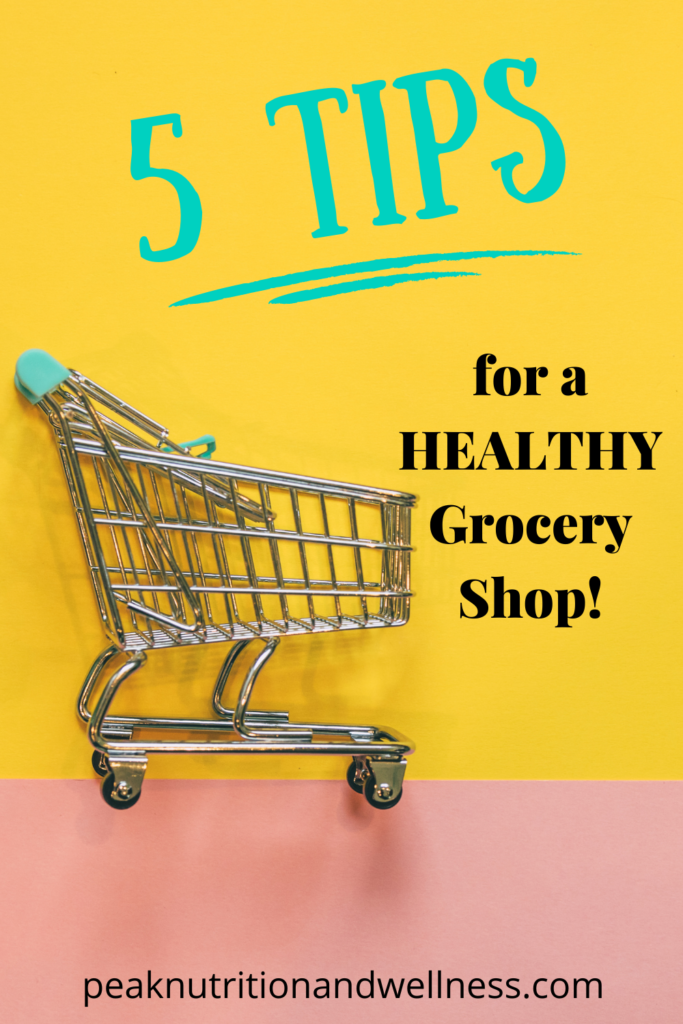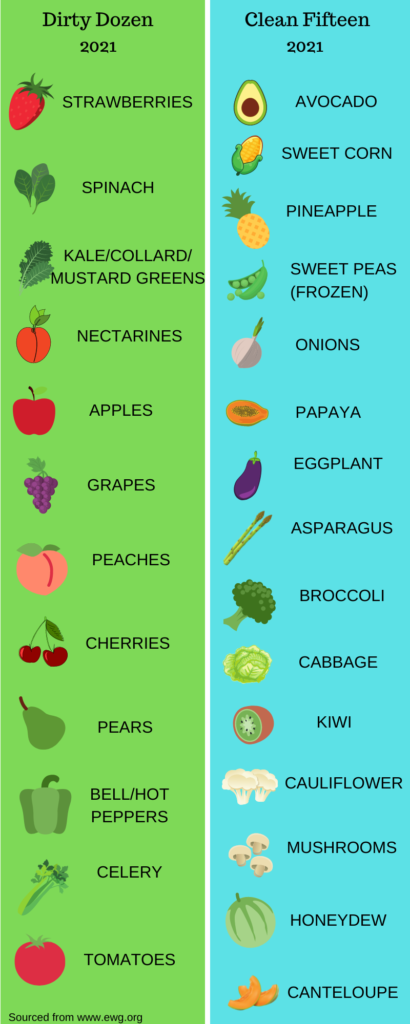
As the saying goes, all good things must come to an end. The holiday season is winding up for most of us and I head back to the PNW tomorrow after a wonderful, soul rejuvenating, extended visit with family in the Motherland. 6 weeks away from my regular routine is a long time and I know the first thing I need to do (after an extended snuggle-fest with my fur baby), is to stock the fridge with food!!

For many, the New Year is a time to reset and recommit to those healthy habits that may have fallen by the wayside during all the holiday fun. Gyms will be popular again, google searches for cleanses will go through the roof, but the best way to support a healthy lifestyle and get back on track is to make sure you have healthy food on hand!
I’m a weirdo. I enjoy grocery shopping, but I know for many it is a CHORE! You find it hard enough carving out time to shop, let alone figuring out what you should and shouldn’t be filling your cart with!
So here’s my TOP 5 TIPS for grocery shopping with your health in mind.
1. Is it a WHOLE food?
Most of the food we eat should whole, single ingredient foods – foods that are unprocessed, unrefined, and still recognizable as something you would find in nature! Processing can damage or strip nutrients from the food; chemical additives, like colours, flavours or preservatives, and other ingredients, such as sugar and vegetable oils, contribute to the damaging effects of processed foods as well.
2. Think Variety
Don’t get stuck in a rut! We want to be eating a wide range of foods. Mix up the selection in your fruit and veggie selections. Be daring and try something new! In our Standard American Diets, approximately 60% of the calories come from soy, wheat and corn. That’s means we are leaving A LOT of good nutrition on the table by missing out on all the phytonutrients, vitamins and minerals in colourful fruits and vegetables.
Try to “Eat The Rainbow”. Can you get at least one fruit or vegetable from each colour in the rainbow on your plate daily?
Eating a wide variety of plant foods is also great for supporting your microbiome (the beneficial bacteria in our guts that support overall health). The more varieties of plants consumed, the more robust and diverse the microbiome.
3. Think Seasonally
Eating with the seasons is one way to increase the diversity in your diet and allow us to consume a wide range of nutrients that changes often. Choosing seasonal produce can often mean getting more nutrient dense produce. It hasn’t been stored in a warehouse for months, slowing losing its nutrient potency. A quick google search can give you an idea of what is in season in your region, so you can add some seasonal goodies to your cart!

4. Think Locally
Depending on where you live, this is easier said than done. If you live in a temperate climate with long growing seasons, you are going to have an easier time sourcing local food than someone who lives under 4 feet of snow for 6 months of the year!
Farmers Markets, CSA (Community Supported Agriculture) memberships, your own garden are all great places to get fresh, local produce. Because it is freshly harvested, the nutrient density is going to be much higher than the same thing that was harvested, stored and transported many miles to reach your local grocery store.
Some extra bonuses of eating local are that you are supporting local farmers, eating what is in season on the farms and, because it hasn’t travelled long distances, it is better environmentally!
5. Think Quality
I know organic produce is expensive and, for the most part, looks exactly like its cheaper, conventional cousin. So what’s the difference?
Different countries have different regulations around the term “organic”. In the U.S., certified organic means annual audits are conducted to ensure the following standards are met:
– No synthetic fertilizers or pesticides
– No antibiotics or hormones
– No GMOs
In today’s world, we are exposed to a multitude of toxins on a daily basis. On top of just adding to our toxic load and stressing our detoxification system, many of these toxins are potential carcinogens and/or endocrine disruptors (meaning they affect our hormone balance). We don’t always have control over what we are exposed to, so it’s important to focus on areas where we CAN lessen our exposure. Eating organic is one way to do that.
For more information about Organic Vs Conventional check out THIS post I wrote.
So how do you go about fitting organic into your budget? Do what you can with what you have. I’d rather see someone chomping through a bunch of conventionally grown carrots than diving headfirst into a box of Oreos! Follow the Environmental Working Group’s Dirty Dozen and Clean Fifteen Lists and choose your organic produce from those that may have the highest pesticide residue.

One last tip? Whenever possible, get to know your local farmers/producers! Many smaller farms follow all the organic standards, but simply do not have the money to get “certified”. Ask questions about their product. If they are proud of their processes, they will be happy to share!

